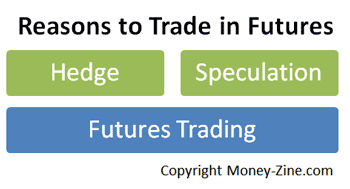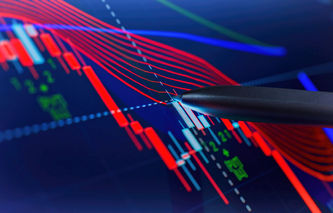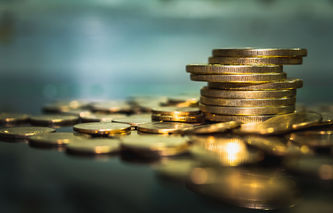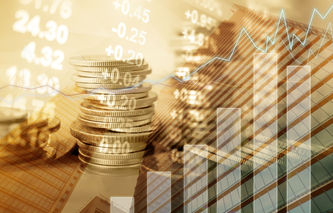In this article, we're going to provide an introduction to futures trading. As part of that discussion, we're going to first talk about the structure of these contracts, delivery of commodities, and pricing of options. Then we'll explain some of the common industry terms such as hedges, straddles, calls, puts, and stop loss orders. There are two basic reasons that trading in futures has grown in popularity. First, and foremost, these contracts can be used as a hedge against the movements in a commodity's price. For example, a company can purchase a contract to "lock in" the price paid for the raw materials it uses in a manufacturing process.
Futures contracts are also intriguing to some investors, especially those that like to speculate. Contract price volatility, coupled with financial leverage, can result in substantial profits for a trader on the right side of a transaction.
Buyers and Sellers of Contracts
Trading in futures involves contracts, which are agreements to buy or sell the underlying commodity at a future date and at a fixed price. When buying a futures contract, or assuming a long position, the investor is agreeing to buy the commodity from the seller when the contract expires. The seller, in turn, takes a short position and agrees to sell the underlying commodity to the buyer at a future date and at a fixed price. Over time, there will be certain events that cause a change in the value of the underlying commodity. For example, an adjustment to supply and demand can move the price of the commodity up or down. This movement in price will cause the value of a contract to change, thereby creating the potential for profits or losses among the investors holding contracts.
Taking Delivery of a Commodity
In many cases, the buyer of a contract never takes physical delivery of the commodity. Typically, the buyer and seller liquidate their holdings before the contract expiration date. To do so, a buyer would need to sell their futures contract, and a seller would need to buy a futures contract.

Brokerage firms keep a close watch on "open" accounts, and track who has a long or short position in a contract that is nearing maturity. Before the delivery date, these firms will usually contact the trader and inform them they either need to close out their positions or pay the full value of the contract and take physical delivery of the underlying commodity.
Changes in Price
The law of supply and demand is a constant driver of change in the price of futures contracts. If a commodity depends on farmers, then weather conditions can affect the price of a crop such as wheat. Ideal weather in a given year might yield a bumper crop for farmers, and drive down the price of wheat. On the other hand, a drought might make for a low yield, and drive the value of wheat upwards. When trading in interest rates, or currency futures, the value of the contract will be influenced by the policies and activities of the Federal Reserve or the central banks of a foreign country. Even changes in the general economic conditions of a country can cause significant movement in this type of contract.
Pricing an Option
Since some of these price movements can be forecasted, there is often a "premium" that aligns a cash position with a futures contract. That is to say, what it might cost to buy the commodity today versus what it might cost to buy the very same commodity six months into the future. Although these relationships can be quite complex, an option's price, or its premium, depends on only three variables:
The relationship, and time, between the futures price and the strike price
The overall time to maturity for the option
The volatility of the underlying futures contract
Leveraged Investments
Futures contracts are considered highly leveraged positions. Traders need only supply a fraction (10 to 15% in most situations) of the investment as margin, yet they are exposed to the full change in any value of the contract held. In fact, the money the trader provides is not used to purchase part of the contract; it is to act as a performance bond. As with all leveraged investments, the possibility of excessive gains sparks interest in the futures market. Unfortunately, every time one party benefits from a change in values, there is another party on the losing end; and those losses can be just as big as the gains.
Futures Trading Jargon
This introduction to futures contracts is going to finish with a summary of the jargon, or terminology, an investor might encounter when trading in futures contracts.
Short Hedge
A short hedge is simply the selling of futures. This strategy is used by individuals that either own the commodity, or in some way might experience a loss if the value of the underlying commodity declines.
Spreads or Straddles
Speculators, or arbitrageurs, will oftentimes assemble spreads, or straddles, to exploit inefficiency in the marketplace. A spread involves the simultaneous buying and selling of contracts that have different characteristics (such as expiration dates).
Calls
A call grants the contract holder the right to purchase the underlying futures contract at a fixed price, also known as a strike price. A trader that buys a call does so because they are bullish on the future's price; they believe the contract will be more valuable in the future.
Puts
When an investor buys a put, they are buying the right to sell the underlying contract at a particular strike price at a future date. An investor that purchases a put is said to be bearish on the value of the underlying commodity; they believe the commodity will be less valuable before the contract expires.
Stop Loss and Limit Orders
Limit orders, or stop loss orders, are commonly used in the futures market. With this type of order, the trader instructs their broker to sell or buy a contract only if the price reaches a certain value. Limit orders can be marked "good till canceled" or they can be considered active during a specific trading session.
Protecting Investors
Finally, the price of a futures contract can move up or down dramatically based on news such as poor weather conditions or political instability. To protect investors, and provide for a more robust and stable market, the commodity exchanges have in-place daily trading limits for certain contracts. These are sometimes referred to as maximum daily price limits. The exchanges use a formula to determine this trading limit, and the limits themselves can apply to a single trading day or the activity occurring over consecutive days. The limit basically serves to protect investors from an extremely volatile market. Unfortunately, limits are not placed on all types of contracts. For example, stock index futures and currency futures do not normally have maximum trading limits.




